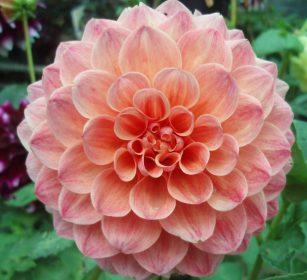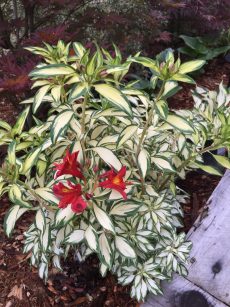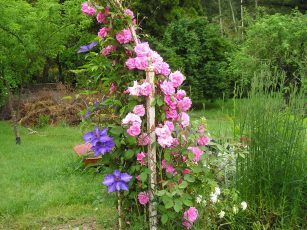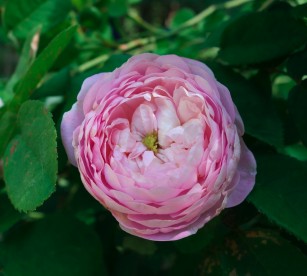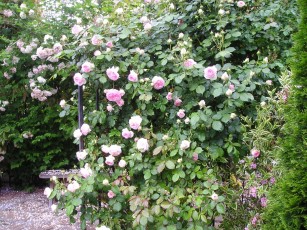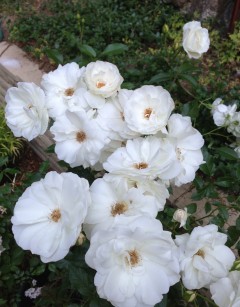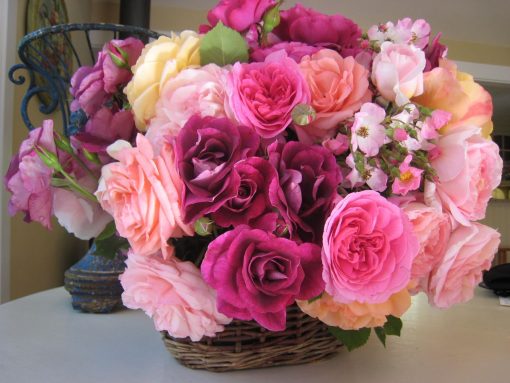
Last fall I designed a garden for some friends after they had a new septic system installed. Little was left of the old garden after the bulldozer left. On Susan and Ken?s wish was a new dogwood, a designated space to grow tomatoes, grasses and a cutting garden. When bare root rose season rolled around Susan got her wish and bought several in her favorite colors: purple, lavender and mauve. They are strongly scented and disease resistant. If you have room for a few more roses now?s the time to get yours in bare root.
And if you haven?t already pruned your roses it?s time to do that too. Here are some tips.
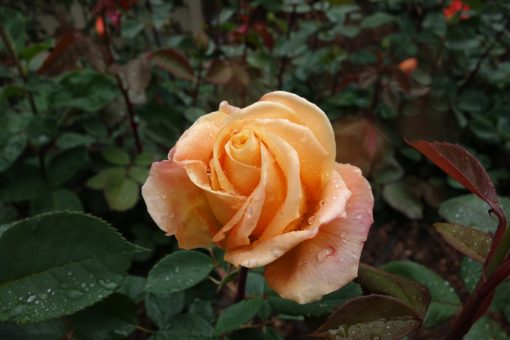
Roses are super forgiving so don?t be intimidated by all those rules. Just ask my friend, who shall remain nameless but writes the food column for this paper. Her roses are spectacular.
It?s best to prune your roses before they start leafing out or some of their energy will be wasted. If yours have not dropped all their leaves, pull off old leaves after pruning to prevent the spread of fungal diseases.
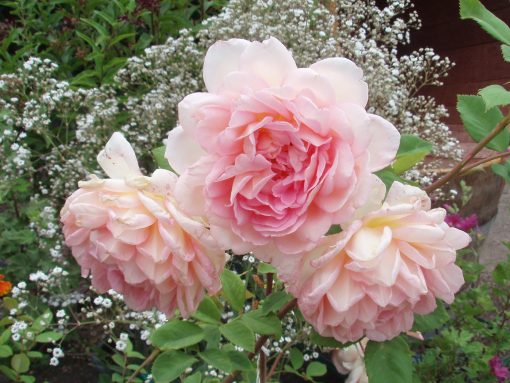
Most of us want our rose bushes to produce lots of roses on a compact shrub and not just a few exhibition size blooms so prune your shrubs moderately. The goal is to keep the center of the plant open for good air circulation aiming for a vase-shaped bush with an open center. Cut out canes that cross, saving the better of the two, prune spindly and diseased stems and dead wood. Also prune canes that appear weak or broken. Healthy canes appear green or reddish while old and dying canes are brown. Cut back the remaining stems by about third. When pruning, cut canes at a 45-degree angle just above an outward facing leaf bud or a swelling on the cane. Slant the cut away from the bud to encourage growth outward. Clean pruners afterward to prevent the spread of disease and keep your pruners sharp to make clean cuts.
Same goes for climbing roses. Cut out extra stems if there are too many and also cut back long established canes to the place where they are slightly thicker than a pencil. Then cut each side stem down to several inches. This will cause the cane to flower along its complete length for a beautiful spring display.
Heirlooms roses such as David Austin, other old antique garden roses, and floribunda roses require less pruning because their open look is part of their charm. Keep this in mind and prune lightly. Old garden roses that bloom once in the spring should be pruned after flowering.
If you have a huge climber de-leafing might not be possible and spraying with fungicide may be your only option if you?ve had disease problems in the past. Rake up the debris beneath the plant and discard to eliminate overwintering fungus spores. It’s a good idea to spray the bare plant, coating the trunk, branches and twigs and the surrounding soil with a combination organic horticultural oil to smother overwintering insect eggs and a dormant spray like lime-sulfur or copper soap to kill fungus spores. If you usually only have problems with black spot you can use a mixture of 1 teaspoon baking soda with a few drops of light horticultural oil in 1 quart water and spray every 7 to 10 days during the spring.
Pruning intimidates some gardeners but when you understand the reasons for making the cuts pruning becomes less daunting. The reasons to prune are for health, appearance and to control size.
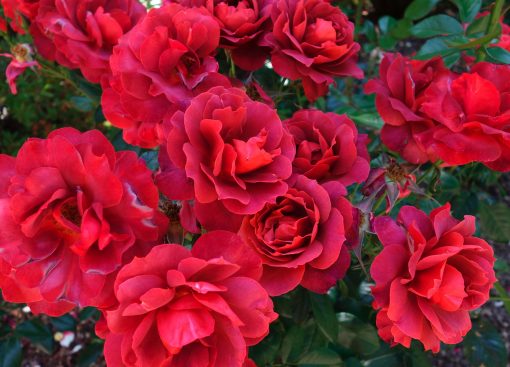
Prune your roses throughout the growing season, too. Deadheading or cutting off spent flowers encourages plants to re-bloom. Every time you cut a rose bloom to bring it indoors or deadhead a fading rose, prune the stem down to shape the plant at the same time. Prune to a spot that has at least 5 leaflets. Roses grow from the point where they are cut so consider the overall shape of the plant as you snip.
Don’t worry whether you’re pruning job is perfect. Roses are super forgiving and you can always trim them up again later.
By the way, my friend Susan ended up with a Twilight Zone (dark purple), a Distant Drums (bronze/lavender), an Angel Face (another lavender) and two Mr. Lincoln’s (classic red) which are Ken?s favorite. The Barbara Streisand, which was to be another lavender, wasn?t available.

